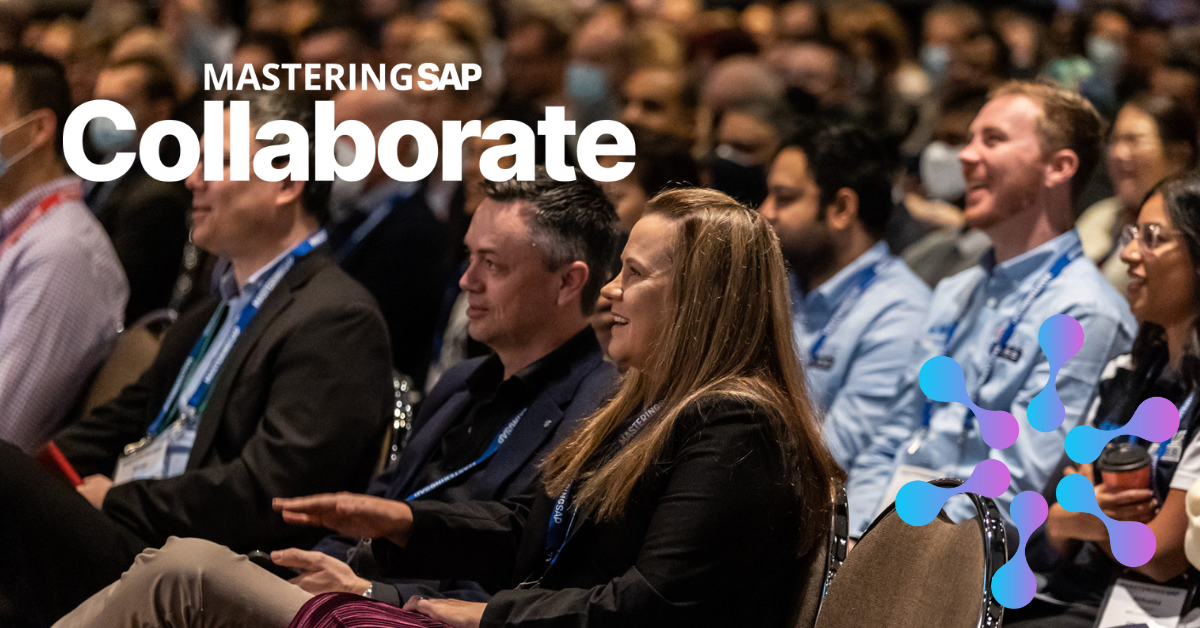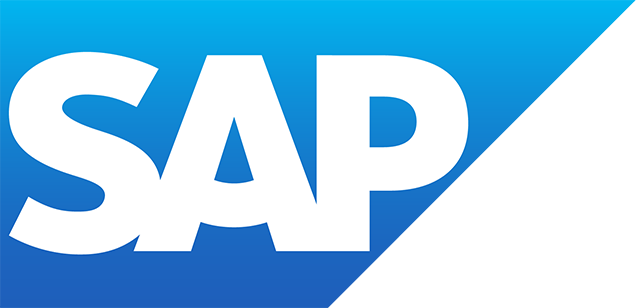SAP Enterprise Architecture Framework
Filter By
Browse By
- SAP Analytics and AI
- SAP Application Development and Integration
- All SAP Application Development and Integration
- SAP ABAP
- SAP ABAP Development Tools
- SAP ABAP Test Cockpit
- SAP API Management
- SAP BAPI
- SAP Basis
- SAP BRF
- SAP Business Application Studio
- SAP CMS
- SAP Design Studio
- SAP Development Tools
- SAP DevOps
- SAP EAI
- SAP EDI
- SAP Extension Suite
- SAP Fiori
- SAP Fiori Elements
- SAP Integration Suite
- SAP Low Code Application Development
- SAP Low Code Automation
- SAP Netweaver
- SAP Release Management
- SAP UI5
- SAP Web Application Server
- SAP Web IDE
- SAP Business Process Management
- SAP Center of Excellence
- SAP CIO
- SAP Customer Experience
- SAP Data and Data Management
- All SAP Data and Data Management
- SAP BW
- SAP BW/4HANA
- SAP Crystal Reports
- SAP Data Archiving
- SAP Data Center
- SAP Data Governance
- SAP Data Integration
- SAP Data Migration
- SAP Data Quality
- SAP Data Services
- SAP Data Strategy
- SAP Data Visualization
- SAP Data Warehouse Cloud
- SAP DMS
- SAP Document Control
- SAP EIM
- SAP ETL
- SAP ETL Tools
- SAP HANA
- SAP HANA Administration
- SAP HANA Deployment Infrastructure
- SAP HANA Studio
- SAP Master Data
- SAP Master Data Governance
- SAP MDM
- SAP Enterprise Architect
- SAP Enterprise Asset Management
- SAP ERP
- SAP Finance
- All SAP Finance
- SAP Accounting
- SAP AR AP
- SAP Asset Accounting
- SAP Billing Systems
- SAP BPC
- SAP BRIM
- SAP Cash Management
- SAP Central Finance
- SAP Controlling
- SAP COPA
- SAP Cost Center Accounting
- SAP e-invoicing
- SAP FICO
- SAP Finance Automation
- SAP Advanced Financial Closing
- SAP Financial Consolidation
- SAP Financial Planning
- SAP FX Risk
- SAP General Ledger
- SAP Global Tax Management
- SAP Hyperion
- SAP Order to Cash
- SAP Payment Processing
- SAP Profitability Analysis
- SAP Rebate Management
- SAP S/4HANA Finance
- SAP Universal Journal
- SAP Governance Risk and Compliance
- SAP Human Capital Management
- SAP Intelligent Technologies
- SAP Platform and Technology
- All SAP Platform and Technology
- SAP Business Technology Platform
- SAP Cloud Connector
- SAP Cloud Integration Platform
- SAP Cloud Migration
- SAP Cloud Platform
- SAP Cloud Providers
- SAP Cloud Strategy
- SAP Container Platform
- SAP Digital Asset Management
- SAP Digital Integration Hub
- SAP Digital Signature
- SAP HANA Enterprise Cloud
- SAP HEC
- SAP Hyperscalers
- SAP Infrastructure
- SAP Messaging
- SAP Smart Forms
- SAP Quality and Testing
- SAP Security
- SAP Spend Management
- SAP Supply Chain Management
- All SAP Supply Chain Management
- SAP APO
- SAP Asset Management
- SAP Business Network
- SAP Digital Manufacturing Cloud
- SAP Digital Twin
- SAP EWM
- SAP IBP
- SAP Inventory Management
- SAP Label Printing
- SAP Logistics
- SAP Manufacturing
- SAP Manufacturing Automation
- SAP MES
- SAP MII
- SAP MM
- SAP MRO
- SAP MRP
- SAP Order Management
- SAP Plant Maintenance
- SAP PLM
- SAP Production Planning
- SAP S&OP
- SAP SD
- SAP SPM
- SAP Supply Chain Planning
- SAP Track and Trace
- SAP Transportation Management
- SAP System Administration
What is SAP Enterprise Architecture Framework?
Based on The Open Group Architecture Framework (TOGAF), the SAP Enterprise Architect Framework (EAF) was developed to be an extension of TOGAF with the intention of supporting customers with an extensive SAP footprint. TOGAF and SAP EAF are intended to be complementary, with TOGAF 8.1 being the foundation for SAP EAF, and TOGAF 9.0 and higher being enhanced by contributions from the SAP EAF. The SAP EAF was initially developed by SAP to support the effective adoption of packaged software in a services-oriented enterprise.
What is SAP Enterprise Architecture Framework?
Based on The Open Group Architecture Framework (TOGAF), the SAP Enterprise Architect Framework (EAF) was developed to be an extension of TOGAF with the intention of supporting customers with an extensive SAP footprint. TOGAF and SAP EAF are intended to be complementary, with TOGAF 8.1 being the foundation for SAP EAF, and TOGAF 9.0 and higher being enhanced by contributions from the SAP EAF. The SAP EAF was initially developed by SAP to support the effective adoption of packaged software in a services-oriented enterprise.
While the TOGAF 8.1 Architecture Development Method (ADM) provides a narrative of each phase and describes the phase in terms of objectives, approach, inputs, steps, and outputs. What the SAP EAF adds is specific guidance around concepts, tasks, and terminology. In addition, narratives, worksheets describing outputs, and accelerators that can be leveraged for the ADM are included in the SAP EAF. The SAP EAF also provides a level of process flexibility that allows customers to focus on a target architecture rather than spending time defining a current architecture. Both extensions to the TOGAF 8.1 were included in TOGAF 9.0 content.
Key capabilities in the SAP Enterprise Architect Framework:
- SAP EAF Meta Model. The SAP EAF explicitly introduced a Meta Model concept as one did not exist in TOGAF 8.1, with the Meta Model enabling a comprehensive view of the entire enterprise architecture. The Meta Model classifies the enterprise into contextual and architectural elements and defines EA concepts into defined entities. These entity relationships provide the basis for a scheme for many enterprise architecture modeling tools.
- SAP EAF Artifacts. SAP EAF expanded on what was in TOGAF 8.1, which only provided a list of sample architectural views, to organize artifacts into Catalogs, Matrices, and Views (or Diagrams). The artifacts are integrated into the SAP EAF Process and Meta Model, and customers can leverage guidance and examples in SAP EAF to develop these artifacts.
- SAP Specific Mappings. The biggest area of distinct content for the SAP EAF is in providing content level guidance for organizations with a large SAP footprint. Mapping SAP content can help customers accelerate their efforts to develop their enterprise architecture as it includes references and mappings to SAP business, application, and technical content.
The SAP Enterprise Architecture Framework can offer specific advantages to SAP customers, and complements TOGAF to accelerate the development of an enterprise architecture for their business.
1248 results
-

- SAP Service Continuity
 Premium
Premium
How to Integrate SAP CRM Shared Services Framework with SAP ERP HCM
Reading time: 29 mins
Learn about the integration of various HR processes with the SAP Customer Relationship Management (CRM) service center’s front-end solution, Shared Services Framework, which helps improve the efficiency and effectiveness of your shared-service organization. Using the birth of a child as an example, the details for the employee benefits of SAP ERP HCM are covered in...…
-

Simplified Interface Handling in a Digital Business Landscape
Reading time: 12 mins
Efficient integration and seamless data exchange are critical in a digital business landscape that spans a growing network of integrated systems and applications. Organizations must find the best way to manage the entire interface life cycle — from implementation through ongoing maintenance and operations. Learn how SAP Application Interface Framework 3.0 not only provides an…
-

- SAP Procurement
 Premium
Premium
Achieve Budgetary Control of Unplanned Service Procurement and Projects Using Value Limit Strategies
Reading time: 21 mins
Learn how to use different value limit strategies to control spending on unplanned service procurement and budgetary allocation for projects. Key Concept Value limit is a functionality within purchase requisition and purchase order (PO) documents that can be applied to set a benchmark value for a project or service procurement if the cost and possibly...…
-
-

How to Build a Strong Security and Compliance Foundation for Your SAP Landscape
Reading time: 19 mins
While most successful cyberattacks are carried out on a company’s application layer, many security departments see the SAP application layer as a “black box,” and its security as the responsibility of their Basis or SAP application colleagues or of a service provider, making the security of this layer a blind spot within many organizations. Compounding…
-

- SAP Business Application Studio
 Premium
Premium
Set Up Intuitive and Automated Reporting Functionality with Crystal Reports
Reading time: 17 mins
Discover a strategy for configuring and developing Crystal Reports for your organization’s SAP BusinessObjects GRC solutions, such as SAP BusinessObjects Process Control. Walk through key installation requirements and configuration steps for your SAP BusinessObjects GRC solutions related to the SAP BusinessObjects Enterprise server, and identify key configuration settings that need to be put into place....…
-

- SAP CoE Framework
 Premium
Premium
Avoid Data Inconsistency Between ESS and PA30 in ECC 6.0
Reading time: 14 mins
New functionality in SAP ERP Central Component 6.0 makes it easier for Web-based applications to access HR master data, but you need to watch out for data inconsistency. Key Concept New configuration points have been added that control HR master data validation and data update for both Web-based applications and the standard HR master data...…
-

- SAP ABAP
 Premium
Premium
Tips for Customizing Transaction Code PPOME
Reading time: 26 mins
Learn all about the customizing options and outcomes of the Structural Graphics tool. All the customizing steps are created in transaction code PPOME. Follow these step-by-step guidelines to get the most from customizing transaction code PPOME. Key Concept Structural Graphics is an SAP ERP HCM Organizational Management application tool that lets users display and edit...…
-
-

- SAP CoE Framework
 Premium
Premium
Navigate ESS with Ease
Reading time: 12 mins
Employee Self-Service (ESS) consists of many components that work together under a supporting architecture. Learn ESS concepts and terminology from this basic introduction. Key Concept Several technologies work together to deliver Employee Self-Service (ESS): SAP NetWeaver Portal, a Java application, and SAP ERP Central Component (ECC) that houses the data. A typical ESS service is...…
-

- SAP Development Tools
 Premium
Premium
How to Select the Right Mobile Solution Architecture for Your Use Case
Reading time: 24 mins
Understand the main mobility architecture paradigms currently supported by the Sybase Unwired Platform, and the advantages and drawbacks of each. Get a high-level view of the architecture and basic steps for implementing each. Key Concept A mobile business object is a method of encapsulating business data so that it can be used across multiple kinds...…
-

 Premium
Premium
Six Tasks to Ensure a Successful External-Facing Portal Implementation
Reading time: 20 mins
To implement an external facing portal, you first need to configure the server side of the portal. Learn how to prepare the necessary portal components and develop light top-level navigation with interactive hover functionality, configure master rules and a URL alias, and implement security for this single point of access for your external portal users....…
Featured Insiders
-

Suraj Gauli
PWC
-

Gaurav Pandey
Principal SAP Architect, Amgen
-

Biswaranjan Senapati
Capitol Technology University
Become a Member
Unlimited access to thousands of resources for SAP-specific expertise that can only be found here.
Become a Partner
Access exclusive SAP insights, expert marketing strategies, and high-value services including research reports, webinars, and buyers' guides, all designed to boost your campaign ROI by up to 50% within the SAP ecosystem.
Upcoming Events
Related Vendors
Your request has been successfully sent


